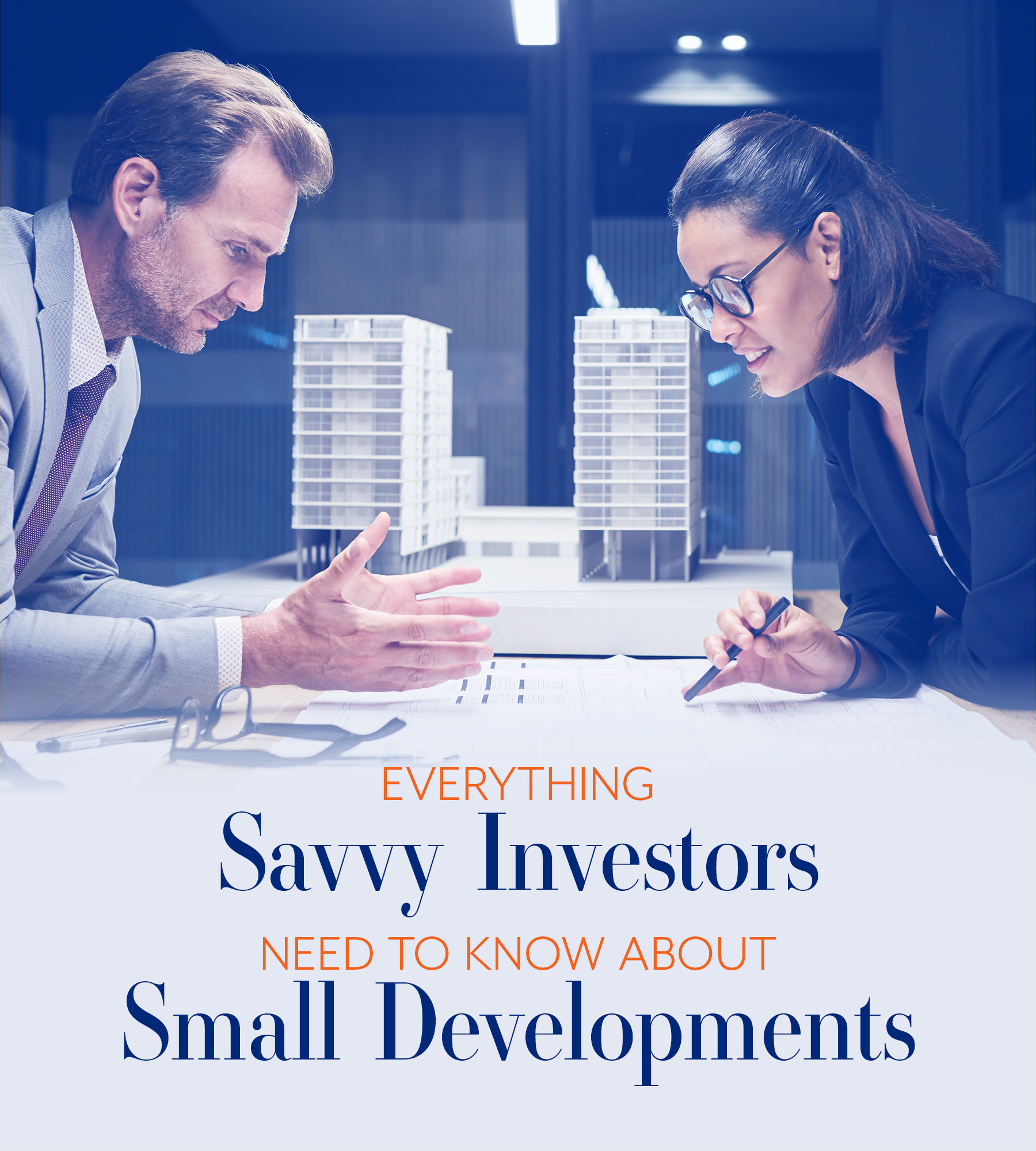Language
You can read the magazine in one of the following languages
As an investor, if you’ve already got a property portfolio then you may be looking at another opportunity – small developments. These require you, as an investor, to dig deep into all your options, into the numbers, into your commitment. Before you launch into this, ensure you’re prepared to really get your hands dirty.
A small development is a property-investing project where you purchase a block of land, whether it’s currently empty or has an existing property on it, and you build multiple dwellings on the site to then sell or rent out and enjoy the rental income and tax benefits. Typically, you’ll consider options like dual key, subdivisions, townhouses or units. You prepare the block of land for multiple dwellings through subdivision of the block.

The more preparation you can do, the better the outcome will be – it’s the approach of ‘measure twice, cut once’.
You might take a battle-ax approach, which works well for wide blocks of land where access can be added toward the back of the block, creating an L-shaped subdivision (it resembles a medieval battle-ax, hence the name). It all depends on whether you have a blank template to work with or you’re building around an existing house.
Otherwise, you adjust the subdivision of the land in line with the dwelling type you choose, what the market has an appetite for, and in conjunction with the regulations set out by local council, which comes down to a number of factors including, but not limited to, zoning (low, medium or high density), size of the land, any heritage overlays, flood or bushfire zones and setbacks (build distance from the street).
Like with all property investing, your goal is to achieve the best-case scenario, but you need to understand what the worst-case scenario could be. The more preparation you can do, the better the outcome will be – it’s the approach of ‘measure twice, cut once’.
When moving into small developments, those worst-case scenarios compound, resulting in some major delays, costs and dramas. To be completely candid, most small developments are not worth it. Your job is to find the one option that will work.

To make the most of your development opportunity, I encourage you to look for what I call ‘the poor cousin’.
Don’t just aim to break even; aim for it to perform well (for example, 10 percent net profit minimum). If the project costs US$1 million, 10 percent equals US$100,000. Enter these projects with the right blend of ideal and reality.
Here’s what to expect and be prepared for with a small development:
• Longer timelines: Small developments take more time than you think. Expect 12 months minimum for a build (or longer, depending on the state of the construction industry, length of council approvals and what you’re looking to develop). Some other things you should be aware of include construction delays, weather and people.
• More costs: Having emergency funds for your investment properties is critical. The need for cash buffers is amplified when you move into small developments. On top of that, your costs are going to be much, much higher and span many more areas than a simple investment property. You’ll be spending more money with the council, potentially more on consultants, more on supplies if prices shift – so, overinflate your costs in the planning and preparation phase.
• Greater wisdom: Consider all options and expect to find ones that are simply not feasible. Set up a reliable feasibility study, so you can decide which option is the best for the scenario you’re facing. Choosing wisely also comes down to choosing the right site, builder, materials, tradespeople, consultants, time – you really need to be the master of top-quality decisions and select top-quality professionals.
You have a couple of options when heading down this road. There are pros and cons to both options.
• Vacant land: Because the process will take more time, you need to ensure you can manage the holding costs of buying and developing vacant land. It’s wonderful to have an empty slate in front of you and demolition costs, but do you have the resources to hold the site until you’re ready to build? Consider also how those costs might impact your serviceability when it’s time to apply for construction lending.
• Existing property: The upside to this approach is you could potentially rent out the property on the block, even at minimal rent, adding to your cash flow and serviceability to later build on it. Even if the property is old, you can still channel the rental income toward your development costs.
To make the most of your development opportunity, I encourage you to look for what I call ‘the poor cousin’. These are suburbs, streets or properties that are located shoulder-to-shoulder with top performing, often blue-chip locations, but might be a few years behind in gentrification or upgrade.
Seek out locations that are close to top performing areas, haven’t quite caught up yet, but show potential to be heading in the same direction. The land is invariably cheaper here, so the numbers may look better for you.

John Pidgeon
Contributor Collective Member
John Pidgeon is the Director of Envisage Property and co-host of Australia’s top finance podcasts, ‘My Millennial Money and My Millennial Property’. In 2018 and 2019 John was recognized as one of the Top 10 Property Specialists in ‘Australian Property Investor Magazine’. He has been investing and coaching in property for over 25 years and is also a qualified mortgage broker and buyers’ agent. For more information visit https://www.envisageproperty.com.au/about
